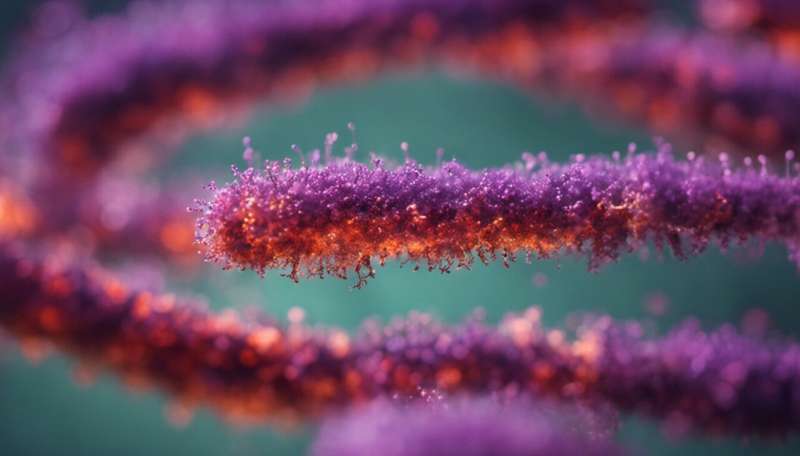This article has been reviewed according to Science X's editorial process and policies. Editors have highlighted the following attributes while ensuring the content's credibility:
fact-checked
peer-reviewed publication
trusted source
proofread
Novel metric examines the role of organic matter and microbes in ecological communities

Ecological researchers study the relationships among different organisms and between organisms and their surroundings. It is important to understand how individual features in a community, like microbes or types of chemicals, affect the overall community's development. By examining individual features, researchers can begin to identify those community or assemblage members that drive similarities across communities.
To assist in this goal, scientists from Pacific Northwest National Laboratory and California Lutheran University have developed a novel ecological metric, called βNTIfeat. Many microbes do not grow in laboratory conditions. The new metric found that these "unculturable" microbes shape the microbial communities in river corridors. The metric also revealed that organic matter is influenced by a variety of compounds that contain nitrogen and phosphorus. The study is published in the journal Frontiers in Microbiology.
βNTIfeat will help researchers answer longstanding questions about ecosystems. For example, βNTIfeat can help uncover a common group of microbes that significantly affect various river corridors at different local or global scales. This will allow researchers to incorporate the dynamics of these microbes into models. In turn, these models will help scientists to generate predictions about how ecosystems may change due to climate change, wildfires, and other future disturbances.
The researchers used βNTIfeat to evaluate feature-level ecological processes in a riverine ecosystem to reveal some key dynamics. First, the team observed that unclassified and unculturable microbial lineages often contribute to differences across the microbial communities; this observation suggests that these unclassified/uncultured lineages play an outsized role relative to their abundance.
Second, the organic matter assemblages were often driven by nitrogen- and phosphorus-containing molecular formulas, indicating a potential connection to nitrogen/phosphorus-biogeochemical cycles. Finally, by relating the βNTIfeat values for microbes and molecular formulas using a network analysis, researchers determined that members of the microbial family Geobacteraceae often had coordinated contributions to ecological structure with both nitrogen- and phosphorous-containing molecular formulas. This observation suggests there is a complex network of ecological interactions across community types.
More information: Robert E. Danczak et al, Inferring the Contribution of Microbial Taxa and Organic Matter Molecular Formulas to Ecological Assembly, Frontiers in Microbiology (2022). DOI: 10.3389/fmicb.2022.803420
Journal information: Frontiers in Microbiology
Provided by US Department of Energy




















